09 Feb Derailed
Have you been in a situation like this? When you work on a team, sooner or later problems arise. What I love about this cartoon is how it shows different emotions and reactions that result when a team faces a problem. Here are the reactions I see displayed by these derailed cartoon characters:
- Yell and argue: You can’t miss the central figures in this cartoon! There are always those people who want to argue about who is to blame, what caused the problem, and how they were not at fault. They can be the most vocal when problems arise.
- Laugh it off: See the man who has a smile on his face (on the far right)? He’s the type who finds amusement in either the problem itself, or the reactions of others to the problem.
- Get angry: This is represented by the man on the right, leaning on his shovel. He could be angry at a number of things – the mistakes made by others, the wasting of his time, the added work this problem will create for him. When facing a problem, some team members can get very irritated or even enraged.
- Feel indifferent: See the guy with no expression on his face, to the immediate left of the two arguing? This guy is unconcerned and doesn’t seem to care that there is a problem. Just like him, some team members might think to themselves, “I’m not the boss. It’s not my problem. I’m staying out of this.”
- Become uncomfortable: Our final observer is on the far left. He looks uncomfortable or embarrassed. When a problem arises, there can be those who feel uneasy with the tension, stress, or pressure.
These are just some of the possible emotions and reactions generated when a problem surfaces. You can probably think of others from your own experiences. The emotions and reactions are not “bad”, in and of themselves, unless they prevent the team from moving forward.
So how does a team get back on track when faced with a problem? Try the ABCs of problem solving:
A – Allow people to be safely heard: Set the guidelines for a discussion so that those involved can share their perspective on the problem. This is not a time to blame, but a time to define the problem.
B – Brainstorm solutions: The team must get together and share solutions to the problem. Don’t allow criticism of ideas at this point – that will squash creativity. Just get ideas out there.
C – Clarify the best solution: With all the options out there, now the group begins to discuss and evaluate the options to determine the best option.
D – Develop the action plan: Once the team has settled on the best solution, develop the plan to implement it. Determine who will do what, and when.
E – Execute the plan: Now the team gets to work solving the problem. Continue to evaluate and adjust as needed.
F – Follow Up with a celebration: When the problem is resolved, celebrate the team’s success. This builds camaraderie and a sense that the team can overcome challenges.
What happens in the next frame of this cartoon is unknown, but what happens in your team is determined by you and the other members of the team. You can expect various emotions and reactions to surface, but don’t let them derail your team’s progress permanently. Follow the ABCs to get everyone back on track and moving forward again.



Sorry, the comment form is closed at this time.